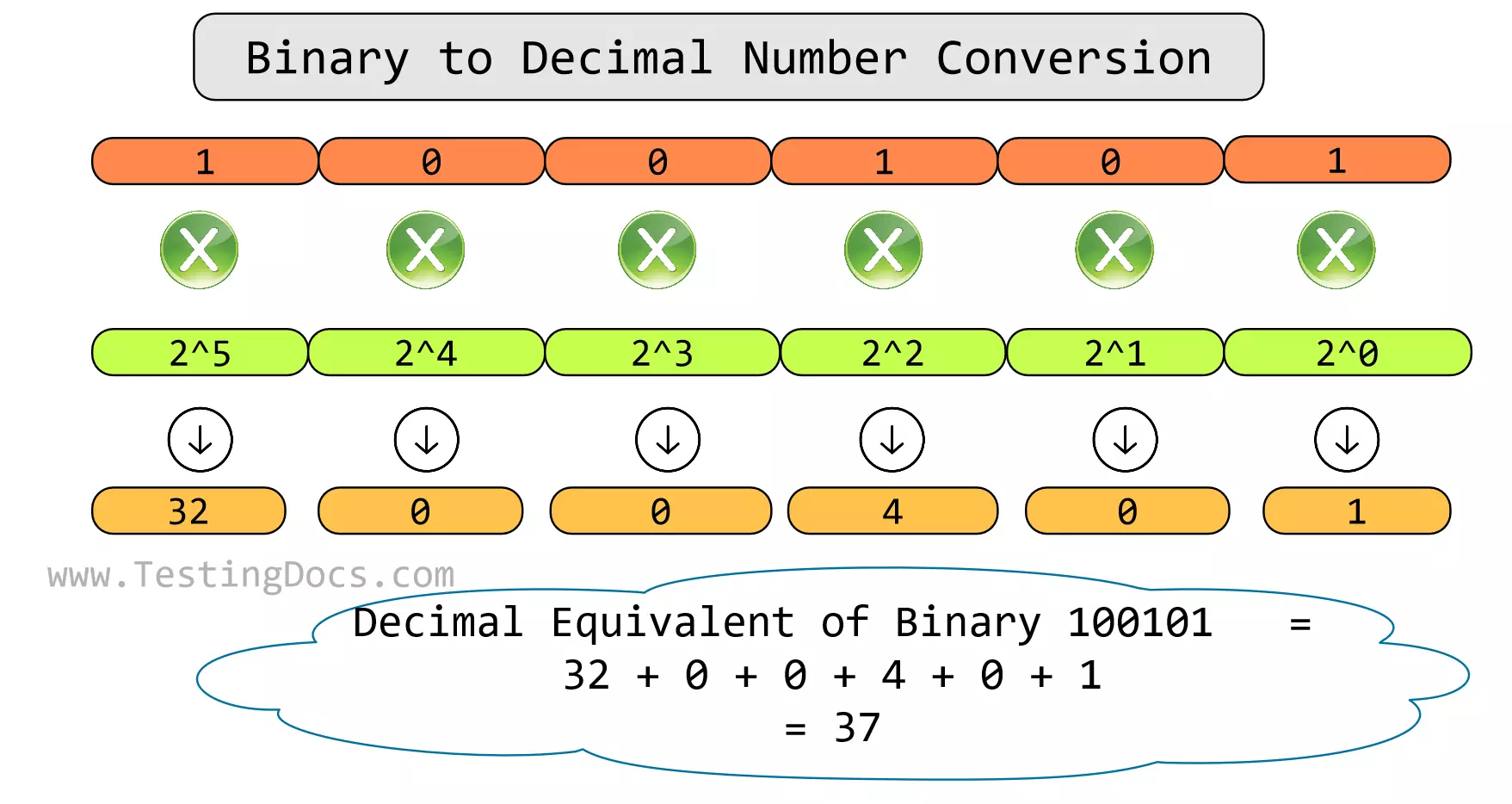Binary to Decimal Number Conversion
Binary to Decimal Conversion
In this tutorial, you will learn to convert a binary to a decimal number. Binary to Decimal Number Conversion is a process used in computer science and digital electronics to convert a number expressed in the binary number system (base-2) to the decimal number system (base-10). The binary number is base-2 and the decimal number is base-10.
What is Binary Number System?
The binary system uses only two digits: 0 and 1. Each digit in a binary number is called a bit. It is the fundamental language of computers.
What is Decimal Number System?
The decimal system uses ten digits: 0 to 9. It is the number system we use in everyday life.
Binary to Decimal Conversion Formula
You can convert a binary number to a decimal number by multiplying the digits with 2 and by increasing the power of the 2 by 1 as we move from the least significant binary digit to the upper binary digits. The least significant binary digit is multiplied by 2^0. We add all the results to get the decimal equivalent of the binary number.
To convert a binary number to decimal:
- Start from the rightmost bit (Least Significant Bit).
- Multiply each bit by 2 raised to the power of its position (starting from 0).
- Sum all the values.
Decimal = bn × 2n + bn−1 × 2n−1 + … + b1 × 21 + b0 × 20
Example
Let’s perform the conversion with an example. We will convert the following binary number to the decimal equivalent number.
100101
Write down the binary number:
1 0 0 1 0 1
Write down the multiplication factors from right to left starting from the least significant binary digit.
1 0 0 1 0 1
2^5 2^4 2^3 2^2 2^1 2^0
Multiply with the respective binary digits:
1 0 0 1 0 1
2^5=32 2^4=16 2^3=8 2^2=4 2^1=2 2^0=1
1 0 0 1 0 1
X X X X X X
32 16 8 4 2 1

The decimal equivalent number of the binary =
1*32 + 0*16 + 0*8 + 1*4 + 0*2 + 1*1
= 32 + 0+ 0 + 4 + 0 + 1
= 32 + 4 + 1
= 32 + 5
= 37
That’s it.
